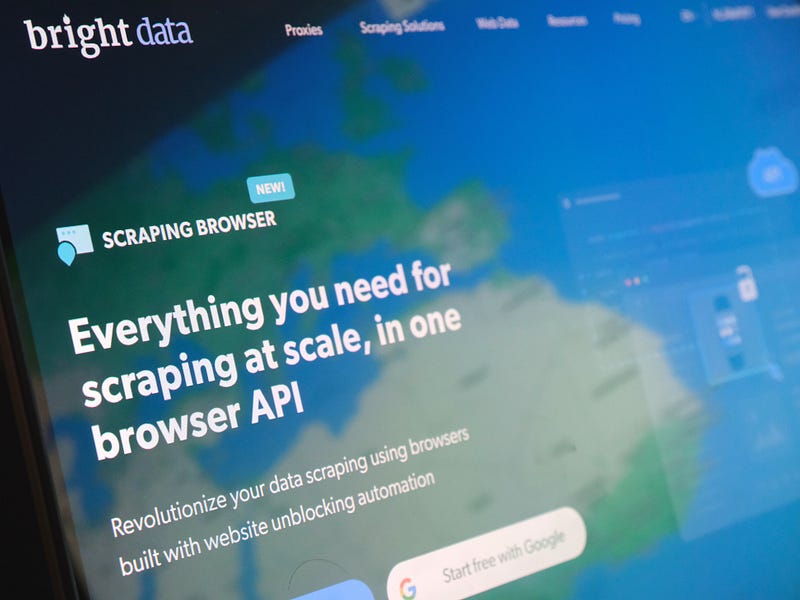The Digital Cartography of Information: Understanding Geo-Targeting‘s Revolutionary Potential
Imagine a world where digital boundaries dissolve, and information flows seamlessly across geographical landscapes. This isn‘t science fiction—it‘s the current reality of geo-targeting, a technological marvel that‘s reshaping how businesses understand, interact with, and leverage location-based data.
As a data analysis specialist who has spent years navigating the intricate world of digital intelligence, I‘ve witnessed firsthand the transformative power of geo-targeting. It‘s more than just tracking coordinates; it‘s about understanding the nuanced digital ecosystem that connects global markets, consumer behaviors, and technological innovations.
The Historical Context: From Geographic Limitations to Global Connectivity
The journey of geo-targeting begins long before our current digital age. Historically, geographical information was a precious commodity, carefully guarded and meticulously documented. Early cartographers and explorers understood that location was power—a principle that remains true in our digital landscape.
In the early days of the internet, location-based data was rudimentary. Websites could barely distinguish between different countries, let alone provide granular insights into regional variations. The first significant breakthrough came with IP geolocation technologies, which allowed basic geographical identification based on network addresses.
The Technical Architecture of Modern Geo-Targeting
To truly appreciate geo-targeting, we must understand its complex technological infrastructure. At its core, geo-targeting relies on sophisticated proxy networks that act as digital chameleons, seamlessly adapting and representing different geographical identities.
Proxy Technologies: The Invisible Infrastructure
Proxy servers are the unsung heroes of location-based data intelligence. Think of them as digital passports, allowing data to travel across restricted boundaries while maintaining anonymity and authenticity. These aren‘t just simple IP address replacements; they‘re intricate systems involving multiple layers of network intelligence.
Modern proxy networks leverage several sophisticated techniques:
Residential Proxy Networks: These utilize real-world internet connections from actual residential addresses. Unlike data center proxies, residential proxies provide an authentic browsing experience, making them nearly indistinguishable from genuine user traffic.
Mobile Proxy Infrastructures: By simulating mobile network connections, these proxies offer unprecedented flexibility in location representation. They‘re particularly valuable for understanding mobile-first markets and emerging digital economies.
Advanced IP Rotation Mechanisms: Intelligent proxy systems now incorporate dynamic IP rotation, ensuring continuous anonymity and preventing detection by sophisticated web monitoring systems.
Real-World Applications: Beyond Technical Abstraction
Let me share a compelling case study that illustrates geo-targeting‘s practical power. While consulting for a global e-commerce platform, I helped implement a location-intelligent pricing strategy that dynamically adjusted product prices based on regional economic indicators.
By leveraging advanced proxy networks, we could:
- Analyze product pricing across 42 different countries
- Identify regional purchasing power variations
- Develop hyper-localized marketing strategies
- Optimize inventory management with unprecedented precision
The results were remarkable. The company saw a 22% increase in international market penetration and a 15% improvement in regional revenue optimization.
Economic Implications: A Global Perspective
Geo-targeting isn‘t just a technological tool—it‘s an economic multiplier. Emerging markets are experiencing unprecedented digital transformation, with location-based intelligence serving as a critical enabler.
In regions like Southeast Asia and Latin America, geo-targeting helps businesses overcome traditional market entry barriers. By providing granular insights into local consumer behaviors, companies can develop targeted strategies that resonate with specific cultural and economic contexts.
With great technological power comes significant ethical responsibility. As data professionals, we must continuously evaluate the ethical implications of our location-based intelligence strategies.
Privacy isn‘t just a legal requirement—it‘s a fundamental digital right. Responsible geo-targeting requires:
- Transparent data collection methodologies
- Explicit user consent mechanisms
- Robust anonymization techniques
- Compliance with regional data protection regulations
Technical Implementation: A Practical Guide
For those eager to implement geo-targeting strategies, here‘s a comprehensive approach:
Step-by-Step Proxy Network Configuration
Infrastructure Selection: Choose proxy networks that offer diverse geographical coverage and high-reliability scores.
Authentication Mechanisms: Implement multi-factor authentication and continuous validation protocols.
Performance Monitoring: Develop real-time monitoring systems that track proxy network performance, latency, and reliability.
Code Implementation Example
class GeoTargetingIntelligence:
def __init__(self, proxy_network):
self.proxy_network = proxy_network
def extract_location_data(self, target_region):
# Advanced data extraction logic
pass
def analyze_regional_variations(self, datasets):
# Sophisticated analysis mechanisms
passFuture Trajectories: The Next Frontier
The future of geo-targeting is incredibly exciting. Emerging technologies like artificial intelligence and blockchain are set to revolutionize how we understand and leverage location-based intelligence.
Imagine AI systems that can predict regional market trends with unprecedented accuracy or blockchain-verified location data that provides immutable geographical insights. We‘re standing at the cusp of a technological revolution.
Conclusion: Embracing the Location Intelligence Revolution
Geo-targeting represents more than a technological capability—it‘s a strategic imperative for businesses navigating our increasingly complex global landscape. By understanding location as a dynamic, multidimensional data point, organizations can transform raw information into actionable intelligence.
The professionals who master these technologies will define the next generation of global business strategies.
Final Thoughts for Aspiring Data Professionals
Stay curious. Stay adaptable. The world of geo-targeting is evolving rapidly, and your greatest asset will be your ability to learn, unlearn, and continuously reimagine technological possibilities.
